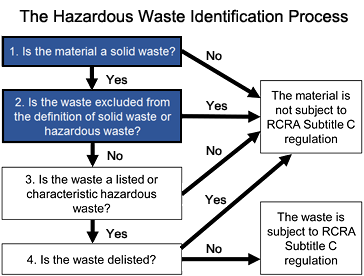Getting My Reclaim Waste To Work
Getting My Reclaim Waste To Work
Blog Article
The Ultimate Guide To Reclaim Waste
Table of ContentsWhat Does Reclaim Waste Do?Reclaim Waste Can Be Fun For EveryoneThe smart Trick of Reclaim Waste That Nobody is DiscussingWhat Does Reclaim Waste Mean?9 Easy Facts About Reclaim Waste Described
Domestic sewage waste refers to the waste and products from a property septic storage tank. The correct administration and disposal of residential sewer waste need fluid waste to be moved to a sewer treatment plant where the correct techniques and tools are applied to cleanse and dispose of waste.
Commercial waste typically consists of possible dangers, such as flammable products or a mix of liquid and solid waste items, and needs an advanced and in-depth disposal process. The disposal of industrial waste typically includes the purification of waste before transport to guarantee safe and appropriate disposal. Industrial waste is created from byproducts and runoff of commercial procedures and production.
This sort of waste can not make use of the very same sewage management transportation or procedures as septic or business liquids. The hazardous waste management procedure needs the examination and testing of liquid waste prior to it undergoes the disposal procedure (liquid waste disposal melbourne). Overflow waste is the fluid waste that originates from overflow and excess stormwater in highly inhabited areas or cities
Runoff waste can create contamination and flooding if not managed correctly. Guaranteeing correct waste management can avoid catastrophes and lower environmental injury.
Getting The Reclaim Waste To Work
Get in touch with PROS Providers today to learn more about our waste administration and disposal services and the appropriate means to care for the liquid waste you generate.
(https://triberr.com/reclaimwaste1)This so-called 'wastewater' is not just a crucial resource however, after treatment, will be launched to our land, waterways or the sea. Used water from commodes, showers, baths, cooking area sinks, laundries and commercial procedures is understood as wastewater.

water made use of to cool equipment or tidy plant and equipment). Stormwater, a form of wastewater, is overflow that moves from farming and urban areas such as roof coverings, parks, yards, roads, paths and gutters into stormwater drains, after rain. Stormwater moves neglected straight to regional creeks or rivers, ultimately getting to the ocean.
Reclaim Waste Fundamentals Explained
In Queensland, most wastewater is treated at sewage therapy plants. Wastewater is carried from domestic or commercial sites via a system of sewers and pump stations, recognized as sewage reticulation, to a sewage treatment plant. Local governments construct, maintain and run most sewage treatment plants. Operators are licensed under the Environmental Security Act 1994 to release treated wastewater at an acceptable environmental requirement into rivers.
The Department of Natural Resources advises city governments regarding managing, operating and preserving sewage systems and treatment plants. In unsewered locations, city governments might require owners to install specific or household sewage therapy systems to deal with domestic wastewater from toilets, kitchens, restrooms and washings. The Department of Natural Resources authorizes making use of house systems when they are confirmed to be efficient.
The majority of stormwater receives no treatment. In some new communities, treatment of some stormwater to remove trash, sand and crushed rock has begun making use of gross toxin traps. Wastewater therapy happens in four phases: Gets rid of strong issue. Larger solids, such as plastics and other items wrongly discharged to sewage systems, are removed when wastewater is gone through screens.
Uses little living microorganisms understands as micro-organisms to damage down and get rid of staying liquified wastes and great particles. Micro-organisms and wastes are incorporated in the sludge.
Indicators on Reclaim Waste You Should Know
Nutrient removal is not readily available at all sewage treatment plants because it requires pricey specialized devices. Clear fluid effluent created after therapy might still include disease-causing micro-organisms - liquid waste disposal melbourne.

Most wastewater moves into the sewerage system. Under the Act, regional governments provide authorizations and permits for ecologically pertinent tasks (Periods) including wastewater launches that may have a regional impact.
The 5-Minute Rule for Reclaim Waste
Or else, examples are considered research laboratory analysis. Frequently several tests are required to develop the degrees of each of the different toxins such as oils, heavy metals and pesticides in water. Monitoring provides factual details concerning water high quality and can verify that licence problems are being met. The information obtained via surveillance offers the basis for making water quality choices.
Report this page